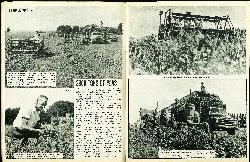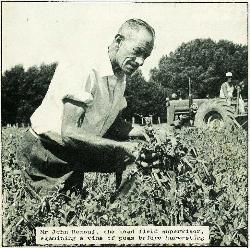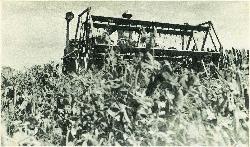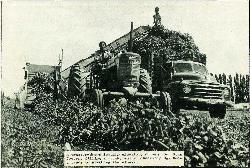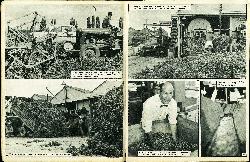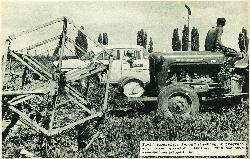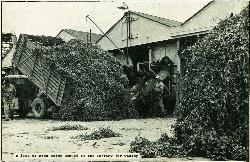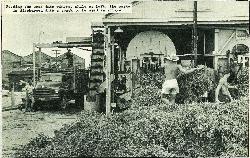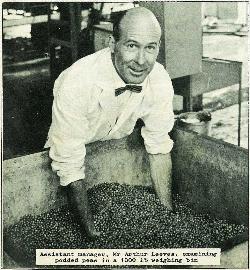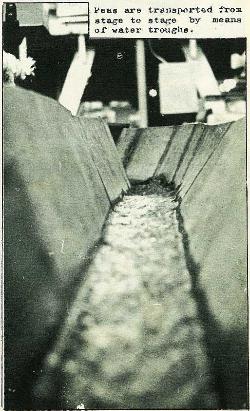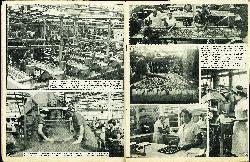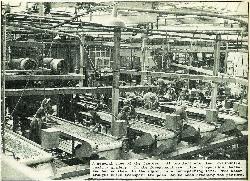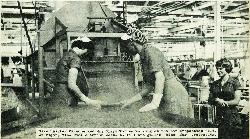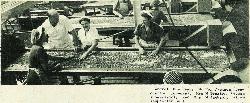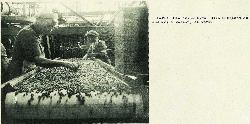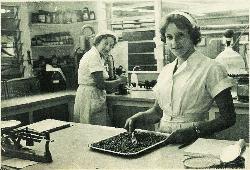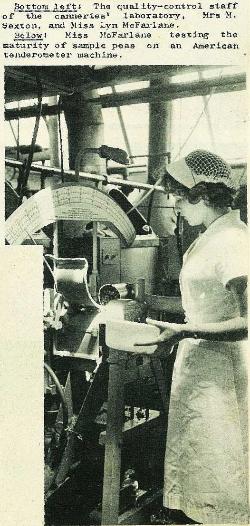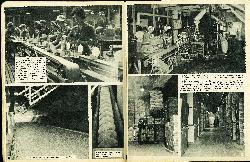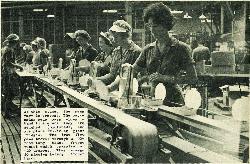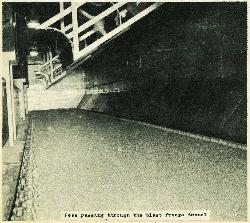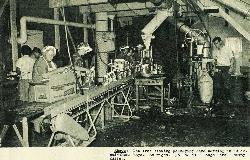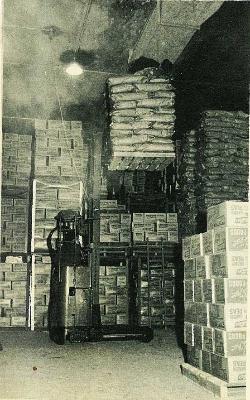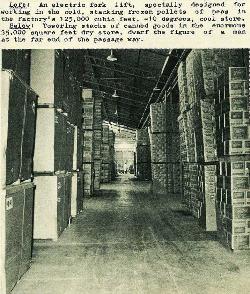14
2000 Tons Of Peas
The rich, fertile, misnamed Poverty Bay flats this year yielded its biggest quantity of green peas ever--2000 tons--for canning and freezing by the Gisborne branch of J. Wattle Canneries Ltd.
Approximately 98% of this tonnage was distributed outside the Gisborne district for national consumption.
The process of supplying the modern housewife with a packet of frozen peas, which can be prepared and served in a matter of minutes, is a long and involved one.
The job of preparing, sowing, spraying, and tending the crop during its growth is done by individual farmers, under the supervision of Watties' field staff.
The various paddocks are staggered in growth over a period of two months to enable the factory to handle the vast quantity.
Before a crop is harvested, sample peas are tested and examined in the canneries' laboratory, to ensure that they are at the correct stage of maturity.
When the decision to harvest is made, a small convoy of mowers, loaders, and trucks moves in, working round the clock at times, to supply the factory with peas.
Upon reaching the factory, the peas are fed into vinars (podding machines), and are washed, weighed, size graded, blanched (cooked in boilers), inspected, packaged, frozen, and cold stored.
From the time a pea is harvested, to the time it is frozen, perhaps an hour and a half would have elapsed, half an hour of which is spent in travelling.
Mr John Renouf, the head field supervisor, examining a vine of peas before harvesting
15
16
17
18
A general view of the factory. At top left are two cylindrical quality graders. In the foreground are five inspection belts, and behind them, to the right, is a hand-packing line. The water troughs which transport the peas can be seen crossing the picture.
Miss Shirley Parsons and Mrs Olwyn Turuna working on the hot inspection belt. At right, Miss Stella Arthur waits to fill one gallon tins for processing.
19
Mrs Reedy, Mr Ron Jackson (production foreman), Mrs M. Braxton (woman supervisor), and Mrs M. Jackson, at an inspection belt.
Pea inspectors, Miss M. McLachlan and Mrs K. Watson, at work.
The quality-control staff of the canneries' laboratory, Mrs M. Sexton, and Miss Lyn McFarlane.
Miss McFarlane testing the maturity of sample peas on an American tenderometer machine.
20
At this stags, the peas vary in process. The packaging peas pass along a hand line where they are weighed (pictured), and are plate frozen in giant fridges. The free flow peas travel through a 90-foot-long blast freeze tunnel which operates at 20 degrees. They emerge 20 minutes later, frozen hard.
Peas passing through the blast freeze tunnel
A screw conveyor takes the frozen peas from the tunnel.
21
The free-flowing packaging line working on 30 oz. polythene bags. At right, 56 lb. bulk bags are being filled.
An electric fork lift, specially designed for working in the cold, stacking frozen pellets of peas in the factory's 125,000 cubic feet, -10 degrees, cool store.
Towering stacks of canned goods in the enormous 35,000 square feet dry store, dwarf the figure of a man at the far end of the passage way.


